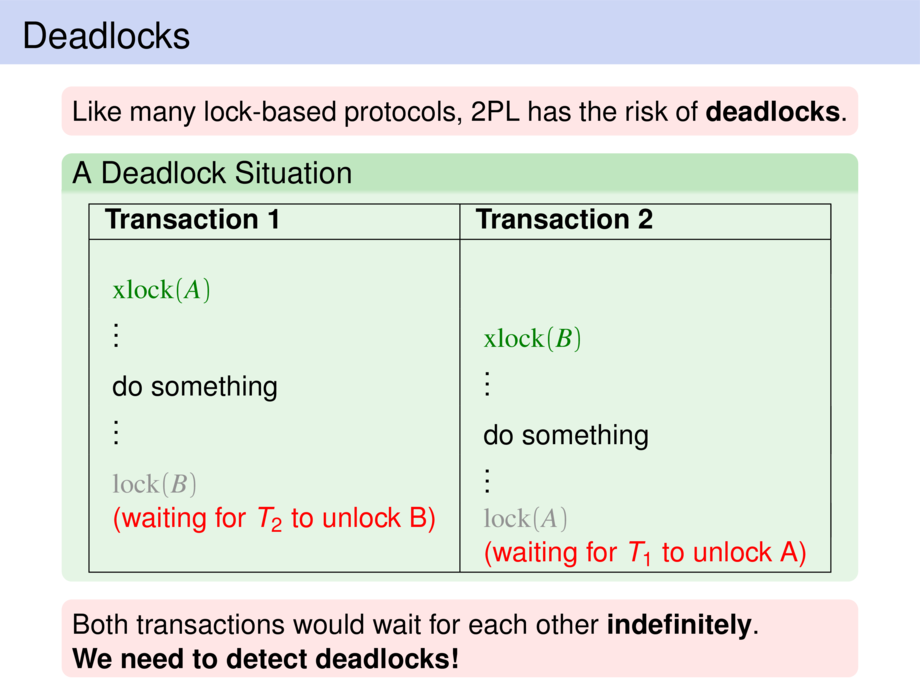



































































































110/212
\begin{frame}
\frametitle{Deadlocks}
\begin{alertblock}{}
Like many lock-based protocols, 2PL has the risk of \emph{deadlocks}.
\end{alertblock}
\pause
\begin{exampleblock}{A Deadlock Situation}
\begin{tcenter}
\begin{tabular}{|l|l|}
\hline
\emph{Transaction 1} & \emph{Transaction 2} \\
\hline
& \\
\mpause[1]{ \textcolor{dgreen}{$\fun{xlock}(\var{A})$} } & \\
\mpause[1]{ \vdots} & \mpause[2]{ \textcolor{dgreen}{$\fun{xlock}(\var{B})$} }\\
\mpause[1]{ do something } & \mpause[2]{ \vdots } \\
\mpause[1]{ \vdots } & \mpause[2]{ do something } \\
\mpause[3]{ \textcolor{gray}{$\fun{lock}(\var{B})$} } & \mpause[2]{ \vdots } \\
\mpause[4]{ \alert{(waiting for $T_2$ to unlock B)} } & \mpause[5]{ \textcolor{gray}{$\fun{lock}(\var{A})$} } \\
& \mpause[6]{ \alert{(waiting for $T_1$ to unlock A)} } \\
\hline
\end{tabular}
\end{tcenter}
\end{exampleblock}
\pause\pause\pause\pause\pause\pause\pause
\begin{alertblock}{}
Both transactions would wait for each other \emph{indefinitely}.\\
\emph{We need to detect deadlocks!}
\end{alertblock}
\end{frame}

